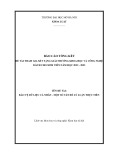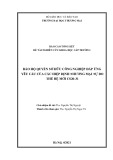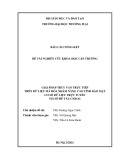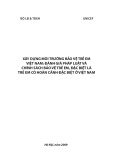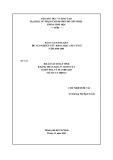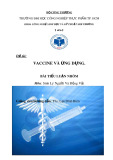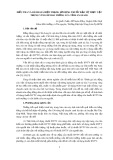
RESEARC H Open Access
Formation of translational risk score based on
correlation coefficients as an alternative to Cox
regression models for predicting outcome in
patients with NSCLC
Wolfgang Kössler
1†
, Anette Fiebeler
2†
, Arnulf Willms
3
, Tina ElAidi
4
, Bernd Klosterhalfen
5
and Uwe Klinge
6*
* Correspondence:
Uklinge@ukaachen.de
6
Department of Surgery, University
Hospital RWTH Aachen, Germany
Full list of author information is
available at the end of the article
Abstract
Background: Personalised cancer therapy, such as that used for bronchial carcinoma
(BC), requires treatment to be adjusted to the patient’s status. Individual risk for
progression is estimated from clinical and molecular-biological data using
translational score systems. Additional molecular information can improve outcome
prediction depending on the marker used and the applied algorithm. Two models,
one based on regressions and the other on correlations, were used to investigate
the effect of combining various items of prognostic information to produce a
comprehensive score. This was carried out using correlation coefficients, with options
concerning a more plausible selection of variables for modelling, and this is
considered better than classical regression analysis.
Methods: Clinical data concerning 63 BC patients were used to investigate the
expression pattern of five tumour-associated proteins. Significant impact on survival
was determined using log-rank tests. Significant variables were integrated into a Cox
regression model and a new variable called integrative score of individual risk (ISIR),
based on Spearman’s correlations, was obtained.
Results: High tumour stage (TNM) was predictive for poor survival, while CD68 and
Gas6 protein expression correlated with a favourable outcome. Cox regression model
analysis predicted outcome more accurately than using each variable in isolation,
and correctly classified 84% of patients as having a clear risk status. Calculation of the
integrated score for an individual risk (ISIR), considering tumour size (T), lymph node
status (N), metastasis (M), Gas6 and CD68 identified 82% of patients as having a clear
risk status.
Conclusion: Combining protein expression analysis of CD68 and GAS6 with T, N and
M, using Cox regression or ISIR, improves prediction. Considering the increasing
number of molecular markers, subsequent studies will be required to validate
translational algorithms for the prognostic potential to select variables with a high
prognostic power; the use of correlations offers improved prediction.
Kössler et al.Theoretical Biology and Medical Modelling 2011, 8:28
http://www.tbiomed.com/content/8/1/28
© 2011 Kössler et al; licensee BioMed Central Ltd. This is an Open Access article distributed under the terms of the Creative Commons
Attribution License (http://creativecommons.org/licenses/by/2.0), which permits unrestricted use, distribution, and reproduction in
any medium, provided the original work is properly cited.





